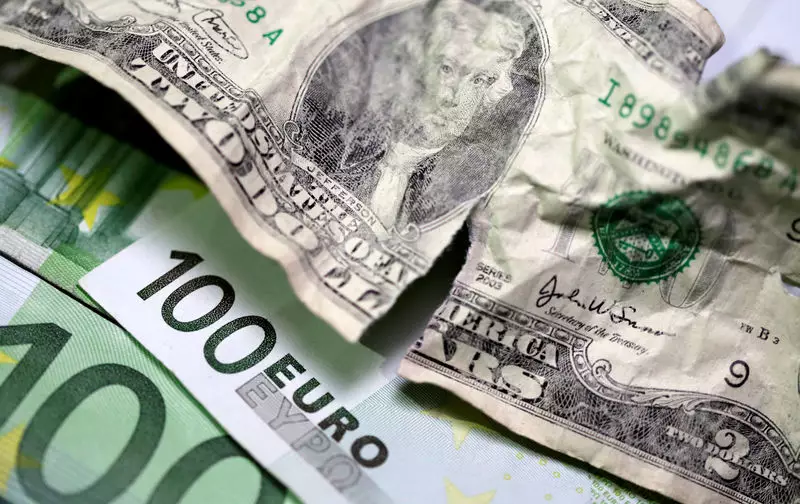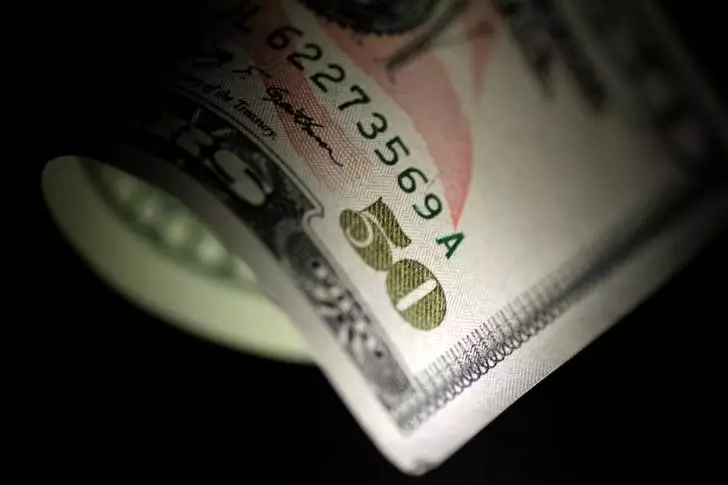U.S. Dollar Strengthens as Inflation Data Looms

On a notable Tuesday, the U.S. dollar demonstrated a marked increase in value, bolstered largely by remarks from Federal Reserve Chair Jerome Powell. The dollar’s ascendance is reflective of broader market sentiments surrounding the central bank’s trajectory regarding interest rates. Powell’s intention to temper expectations of drastic rate reductions has played a critical role in influencing currency markets. The latest data showed the Dollar Index, a tool used to gauge the dollar’s strength against six prominent currencies, advancing by 0.2%, positioning it at 100.737 after a preceding jump of 0.3%.
Analysts from ING have parsed Powell’s comments as an indication that while the Fed may implement interest rate cuts, it is likely to stick to smaller, quarter-percentage-point reductions rather than the more aggressive cuts that markets might have anticipated. “The 50 basis point (bp) reduction in September suggests a structurally dovish market atmosphere,” they noted, implying that a cautious approach will likely prevail. Powell’s specific mention of two more 25bp cuts by year-end hinted at a desire to align market expectations with the Fed’s anticipated policy moves. This strategic communication signals an underlying confidence in the dollar’s prospects as the balance of risk appears favorable for the currency in the near term.
As the week progresses, all eyes will be on the upcoming monthly jobs report set to be released on Friday. Expectations are geared toward the U.S. economy adding an estimated 144,000 jobs in the previous month. However, this anticipated data carries significant weight in terms of market reactions. If the job growth falls short of predictions, it could reignite concerns over a potential recession, prompting traders to reevaluate the Fed’s rate cut strategy. Conversely, if the jobs report exceeds expectations, it may introduce additional fears that the Fed might reconsider the depth of rate cuts, keeping the dollar’s upward momentum intact.
In Europe, the currency market has been less favorable for the euro. The EUR/USD tumbled slightly to 1.1120, indicating traders’ caution ahead of imminent eurozone inflation figures. Such hesitancy stems from speculation surrounding forthcoming rate cuts by the European Central Bank (ECB) as 2023 draws to a close. Recent data highlighted a decline in German inflation to 1.8% for September, slightly below expectations, continuing the trend of easing prices observed in France, Italy, and Spain. Such trends in inflation can test the ECB’s strategy as they weigh their response to economic conditions in the region.
Christine Lagarde, the President of the ECB, recently expressed optimism regarding inflation returning to target levels in a timely manner. Lagarde’s reassurances to Parliament reflect a cautious yet hopeful outlook, which will be a key factor in the upcoming October 17 policy meeting. Yet, underlying challenges persist; the subdued inflation rates across the eurozone may compel the ECB to rethink its economic forecasts, especially regarding anticipated growth rates.
Meanwhile, in the British currency landscape, the GBP/USD dipped by 0.2% to 1.3340, pulling back from a recent high of 1.3430. This retreat underscores the market’s cautious attitude as it processes the evolving global economic landscape. In sharp contrast, the USD/JPY pair witnessed a 0.4% increase to 144.16. The minutes from the Bank of Japan’s July policy meeting revealed dissent among policymakers regarding the pace of interest rate hikes, which adds a layer of uncertainty over when further monetary tightening may occur.
Overall, the dynamics between these different currencies portray a complex picture of global financial health. The U.S. dollar stands resilient, particularly in response to the Federal Reserve’s clear, albeit cautious, stance on interest rate adjustments. As economic reports begin to unfold, traders will remain vigilant, navigating the intricate interplay between macroeconomic indicators and central bank policies. The anticipation of both U.S. job figures and eurozone inflation rates will serve as critical touchpoints for the currency market, shaping trading strategies as investors seek to adapt to the evolving economic landscape.





